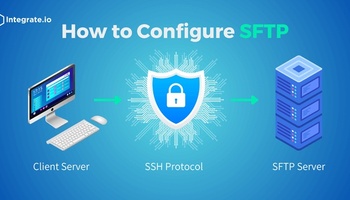Healthcare information is perhaps the most important data in our lives. Your health records can contain your medical history, results of tests and scans, and details of current health insurance. This data is a special class of personally identifiable information, and HIPAA is the law that protects it.
What is the Purpose of HIPAA?
The Health Insurance Portability and Accountability Act (HIPAA) is a law that aims to solve two major issues at once. First, healthcare providers need to share data, and they often do this electronically. Second, patients need to have safeguarded health data. They want their information protected, plus they want the ability to move their information to another provider easily and with no issues.
HIPAA privacy rules lay out a framework of national standards created by the Department of Health and Human Services (HHS). These standards help organizations meet their obligations while also implementing modern data-sharing infrastructure. It’s a flexible law that places much emphasis on responsibility and good planning.
How Does HIPAA work?
From a compliance point of view, there are two key aspects of HIPAA — the privacy rule and the security rule.
- HIPAA privacy rule: The HIPAA privacy rule codifies the types of data that constitute protected health information (PHI).
- HIPAA security rule: The HIPAA security rule outlines the responsibilities of each organization that handles electronically protected health information, or ePHI.
Any organization in the healthcare industry that processes ePHI is a covered entity, which means they must follow HIPAA rules. This includes healthcare providers, insurers, and healthcare clearinghouses.
What Data Does HIPAA Cover?
PHI essentially refers to any type of identifiable health information that links to a specific patient. This includes information such as name, phone number, date of birth, and address, as well as identifiers like:
- Details of attendance
- Date of death
- Individual health conditions
- Medical records
- Electronic health records (EHR)
- Social security number
- Photos and images
- Details of health plans
- Membership or account number
- Biometric data
- Medicare details
- Test result ID numbers
The HIPAA privacy rule doesn’t distinguish between sharing methods. You can commit a patient data breach if you share PHI electronically, send it in written form or disclose it verbally.
Note that state laws vary and may impose stricter conditions than federal law. Consult with state law representatives in your area.
What are the Data Security Requirements of HIPAA?
HIPAA regulations cover entities of all sizes, from small practices to multinational insurance firms. By design, the law is flexible and scalable. The goal is to support sustainable innovation rather than forcing people to follow strict rules.
For that reason, the security rule offers some guiding principles but provides each covered entity with the power to choose how to implement those principles. There are six key rules you need to follow:
- Confidentiality: Ensure full confidentiality for any PHI that you create, receive, maintain or transmit.
- Protection: Protect PHI from any reasonably anticipated threats, such as hackers and data loss.
- Prevention: Prevent unauthorized parties, both internal and external, from accessing PHI.
- Compliance: Make sure the entire team understands and follows HIPAA rules regarding PHI.
- Integrity: Maintain the integrity of all PHI by keeping information up-to-date and avoiding data loss.
- Availability: Make PHI available to those who need it, especially when the patient is porting to another service.
If you’re familiar with data governance principles, you may have noticed that these rules address the CIA triad — confidentiality, integrity, and availability. HIPAA rules complement a robust data governance framework.
What Do You Need to Meet HIPAA Standards?
If you’re dealing with PHI, you need to have the right infrastructure in place. A good framework can help you avoid breaches and take swift action if anything goes wrong.
Under the enforcement rule, there are tiers of fines for HIPAA breaches, so you’ll get a smaller fine if you can show that you were trying to stay compliant. To do that, you’ll need the following in place:
People: You’ll need a designated data steward or security official who oversees policy implementation.
Processes: You must have internal processes for managing security and identifying potential risks, including robust security standards. Privacy practices should be a part of all of your health information technology protocols.
Information Access Management: Employees should have role-based access, which restricts access to only those records relevant to their jobs. Administrative safeguards like this will help you avoid inadvertent HIPAA violations.
Training and oversight: Your organization must provide compliance training to anyone who interacts with PHI. You’ll also need to monitor your team and take action against anyone who breaks the rules.
Risk management: You’ll need to perform periodic risk analysis and risk assessment of your HIPAA processes, and confirm that you’re addressing all risks.
Physical safeguards: Only authorized personnel should be able to access health information technology systems with PHI — this will require having locked doors, swipe cards, and security cards. When working remotely, employees should follow strict physical security procedures for their laptops and phones.
Technical safeguards: Where possible, you can automate some of your HIPAA compliance processes; for instance, the role-based access control that prevents unauthorized persons from viewing PHI.
Transmission security: When you’re moving data across your network or through the Cloud, you need to ensure you’re doing so in a secure and compliant way.
HIPAA is not an add-on to your existing processes. Compliance should be at the heart of everything you do. Everyone on your team must understand the role they play in protecting PHI and avoiding HIPAA violations.
Covered Entities and Business Associates
HIPAA directly affects only covered entities such as healthcare providers, so what happens when a covered entity works with another business? For example, a doctor’s clinic might use a data warehousing company to store backups of data. Who is responsible if there is a data breach?
In this instance, the data warehouse company is a business associate (BA). Before the clinic makes any disclosure of PHI, both parties must sign a business association agreement. This document contains:
- Details about the nature and usage of PHI under the terms of the agreement.
- Confirmation that the BA will abide by HIPAA rules and not use or disclose any PHI they receive.
- A commitment from the covered entity to implement HIPAA-compliant safeguards that prevent accidental HIPAA violations
If the BA works with another company, that company is a business associate subcontractor (BAS). The BA and BAS will sign another agreement between themselves.
This system places some responsibility on the BA. If they don’t safeguard patient information, then they could face fines or prosecution. However, the HIPAA covered entity has to ensure they do everything they can to prevent breaches of health information privacy. When there is an issue, covered entities take ultimate responsibility for resolving it.
How Integrate.io Can Help with HIPAA Compliance
Integrate.io’s data pipeline follows HIPAA business associate requirements, so your PHI is in safe hands. We follow strict security protocols and employ field-level encryption for extra peace of mind.
Ready to automate your HIPAA-related data workloads? Get a 14-day demo and test Integrate.io’s security measures for yourself.










